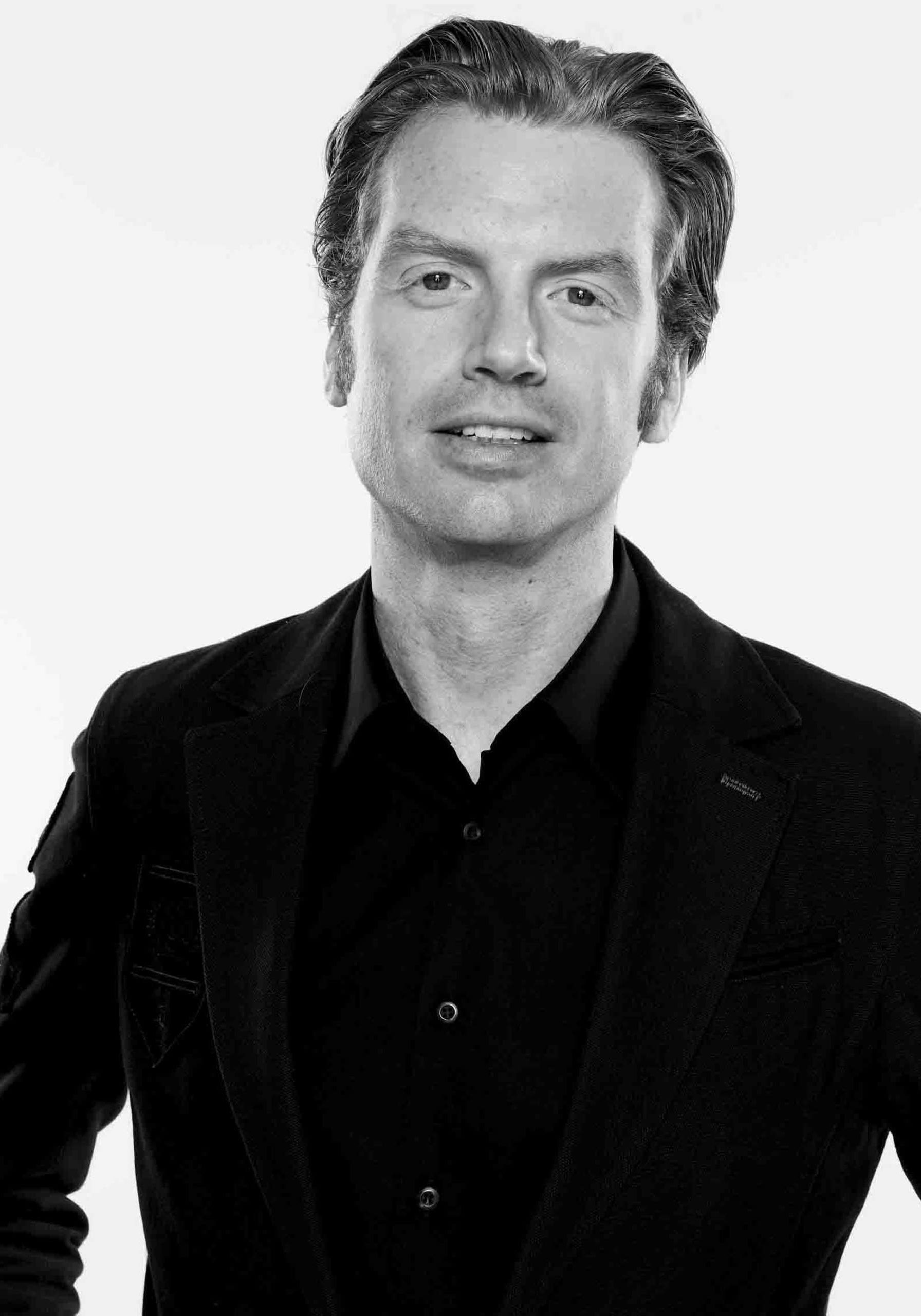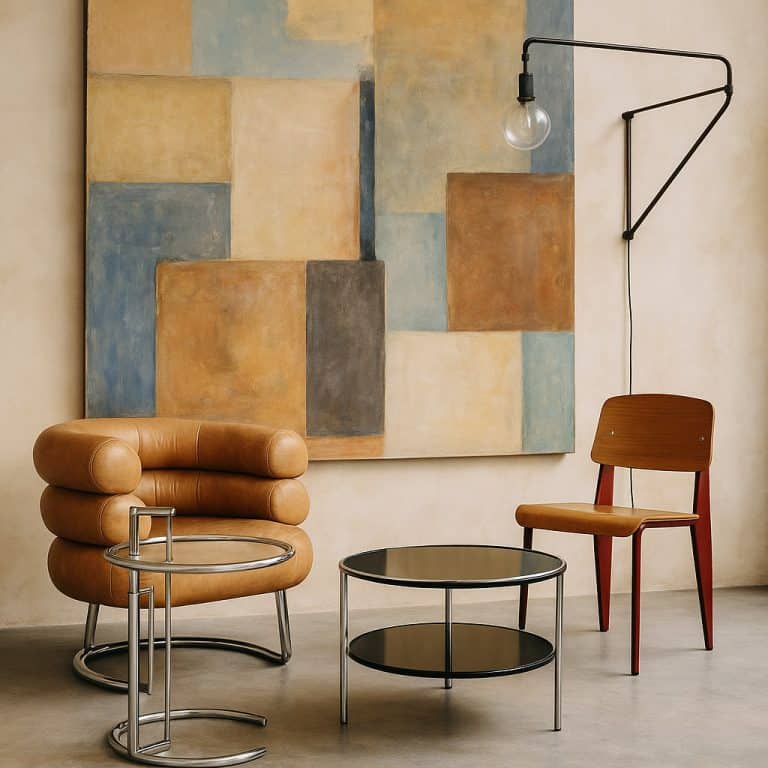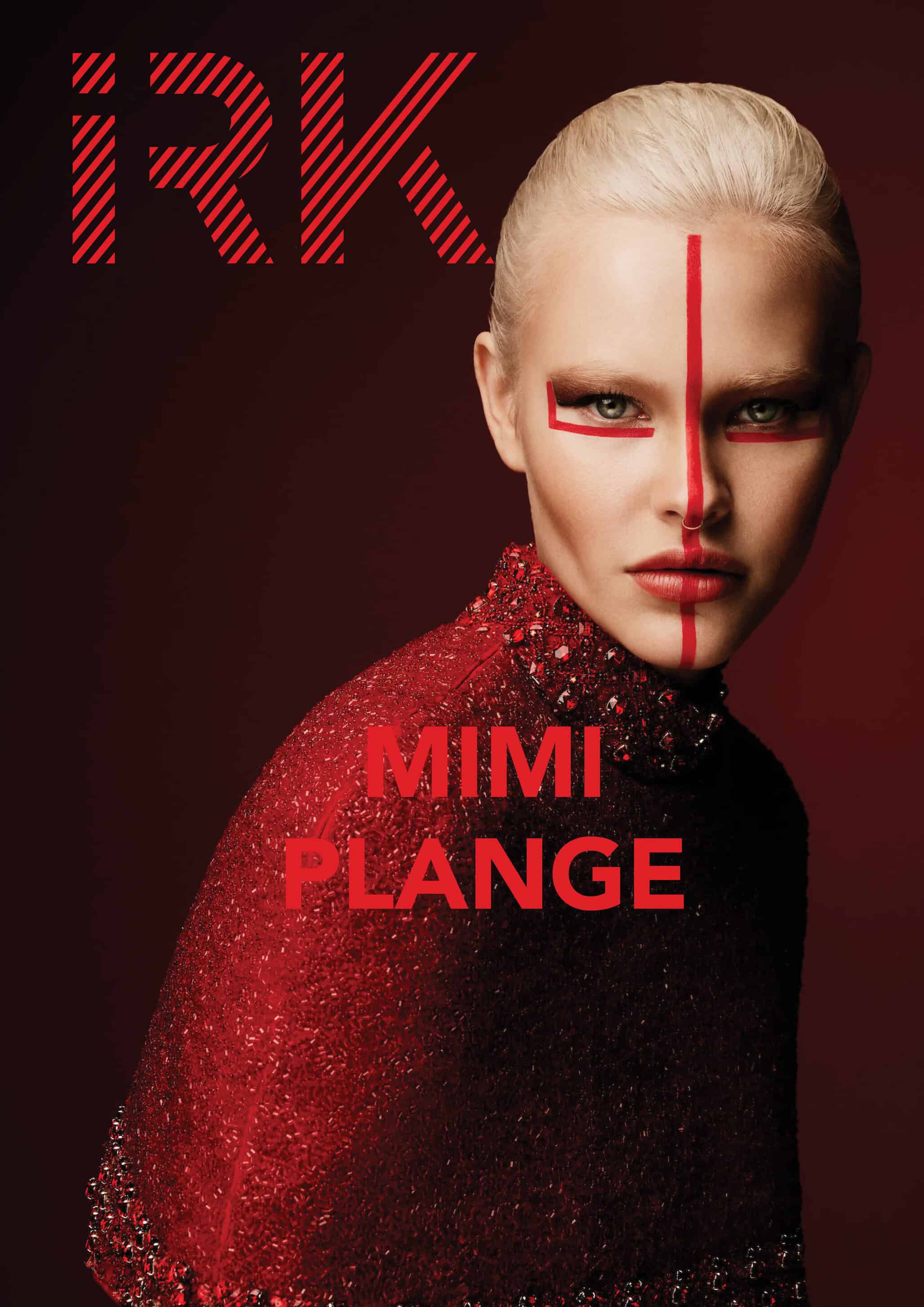
Mimi Plange In Conversation
Irk Magazine and CANNON with Questions by TK & Cipriana Quann
Photography- @lindsayadler_photo
Styling @thecannonmediagroup @theonly.agency
Red Images-Hair @linhhair
Makeup @joannegair
Model @loeil.de.la.mer @officialmodelsny
Gown @mimiplange
@brooklynprla
Hand embellished cape gown with Swarovski crystal trim
Cannon chatted with Mimi Plange with additional questions by TK Wonder and Cipriana Quann to discuss fashion, life, and more.
TK: One of your quotes from a NY Times interview touched upon misconceptions that some have regarding African fashion. You said, “I want to prove to people that African fashion can’t be pigeonholed. I can compete globally.” Working in the fashion industry, I’ve come across narrow-minded assumptions and stereotypes of what is expected of me as a Black creative. At times, do you feel what is expected of you as a designer is narrow-minded based on your African roots and skin color? If so, what is the greatest misconception/ stereotype you’ve come across and how do you combat it?
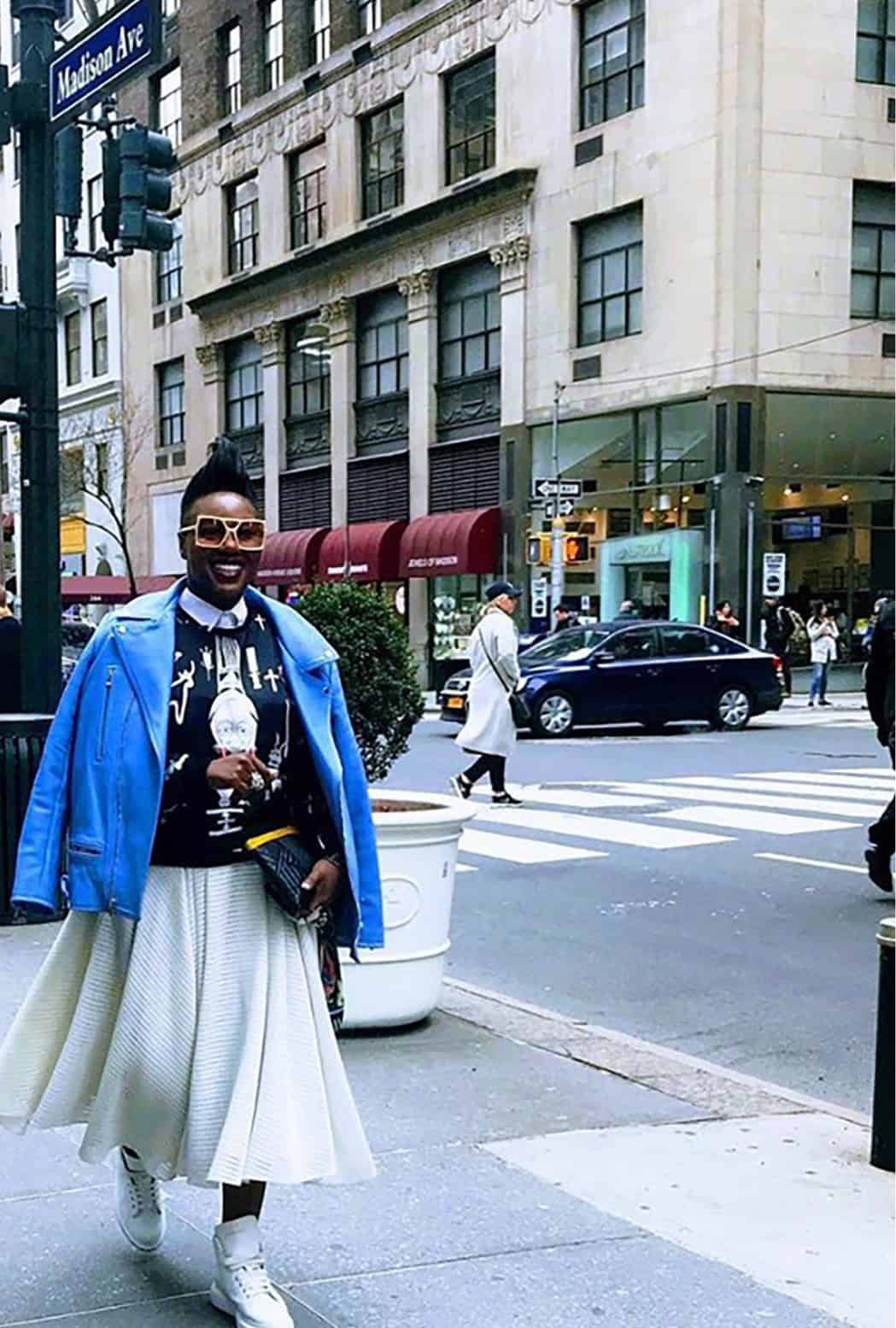
Mimi Plange by @lilliehart
Mimi: My observation of the fashion industry is the constant focus on black designers’ skin instead of craftsmanship. I think the focus should be on fashion design, theory, fabric, etc., and a thorough analysis of what goes on behind the actual designs and not just “What is it like to be a black designer in the fashion industry?” Emphasis on race and not spending much time on the actual work and its inspiration places the designs in a backseat and does not support the growth of the business.
Fashion Designers cultivate their brands into businesses that differ in categories like children’s wear, contemporary, bridge, designer, and couture. These brands integrate into the broader conversation of fashion, and that should not be different for black-owned brands with diverse inspirations and backgrounds.
We are all designers who aspire to have successful businesses. It’s more important for consumers to know what we offer, how amazing it is, and why they must have our products. Our experiences and rich history and black heritage are an important part of the conversation, but they should not be the leading focus when discussing the merits of who a fashion designer is. I will not give too much energy to that concept and limitation, instead, I will concentrate on my distinct ideas and work principles. I determine what I want consumers to learn about my brand and its value through the work that I put out. As designers, we can control the way we want our stories to be told.
TK: Congratulations on your collaboration with Lebron James! This partnership is so powerful and necessary. Lebron is at the helm and his work off the court has been inspiring and meritorious, which makes this partnership all the more special with you onboard and shining a spotlight on your incredible talent. However, the fashion industry does not open doors for similar partnerships as frequently as it does for our White counterparts. Why is a partnership like this important to you?
Mimi: Collaborating with the LeBron James brand on our first sneaker, the LeBron 18 Low x Mimi Plange, “Higher Learning” was an absolute honor. LeBron has been championing stories of strength, equality, and inspiration within our communities for years and it’s really dope to be a part of a movement about education and what it means to be great beyond what you do. This movement is transforming lives and we are providing our new and existing customers a product that conceivably will inspire them. We are so thankful and filled with gratitude. I can’t thank LeBron and Nike Basketball enough for this empowering experience. We feel uplifted and bracing for the next steps. We are sharing our voice with a whole new audience that we can learn from and connect with.
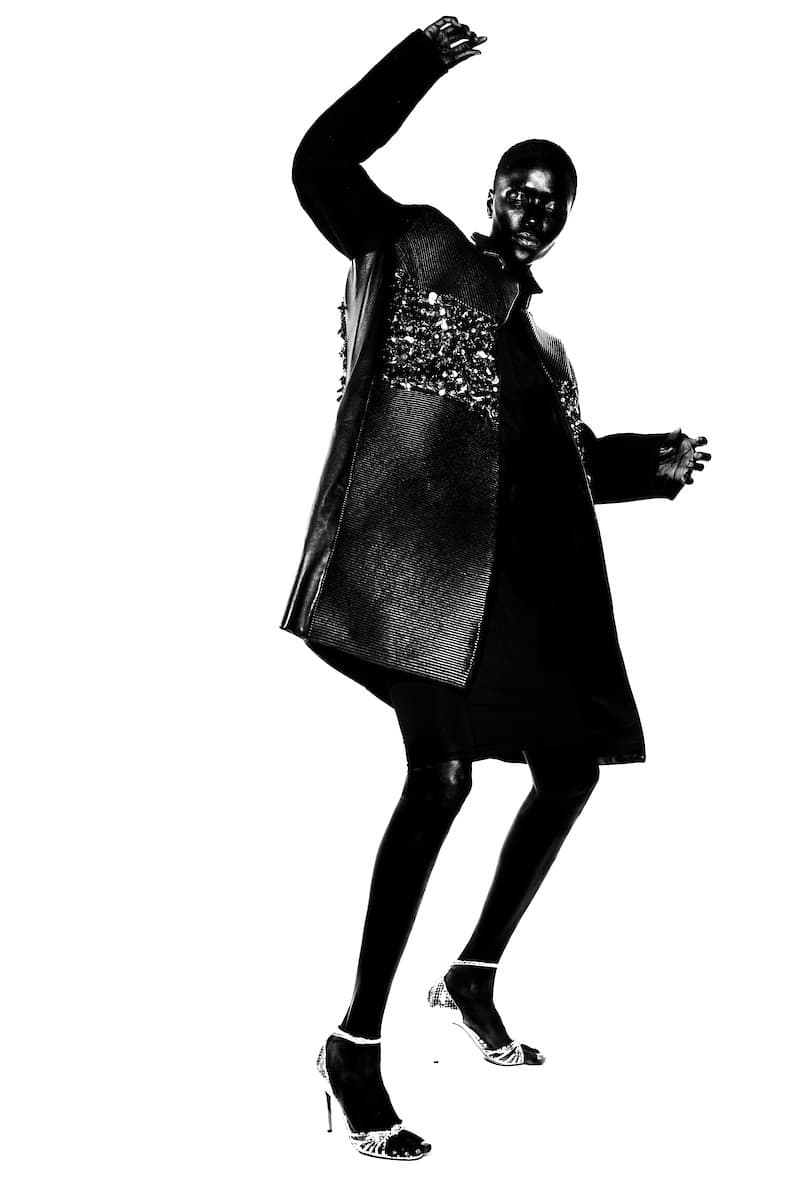
TK: You have a degree in architecture. The essence of architecture and fashion design are strongly aligned with building something. When building a collection, do you merge what you’ve learned in both sectors, architecture, and fashion? Are some elements of architecture applicable to your designs?
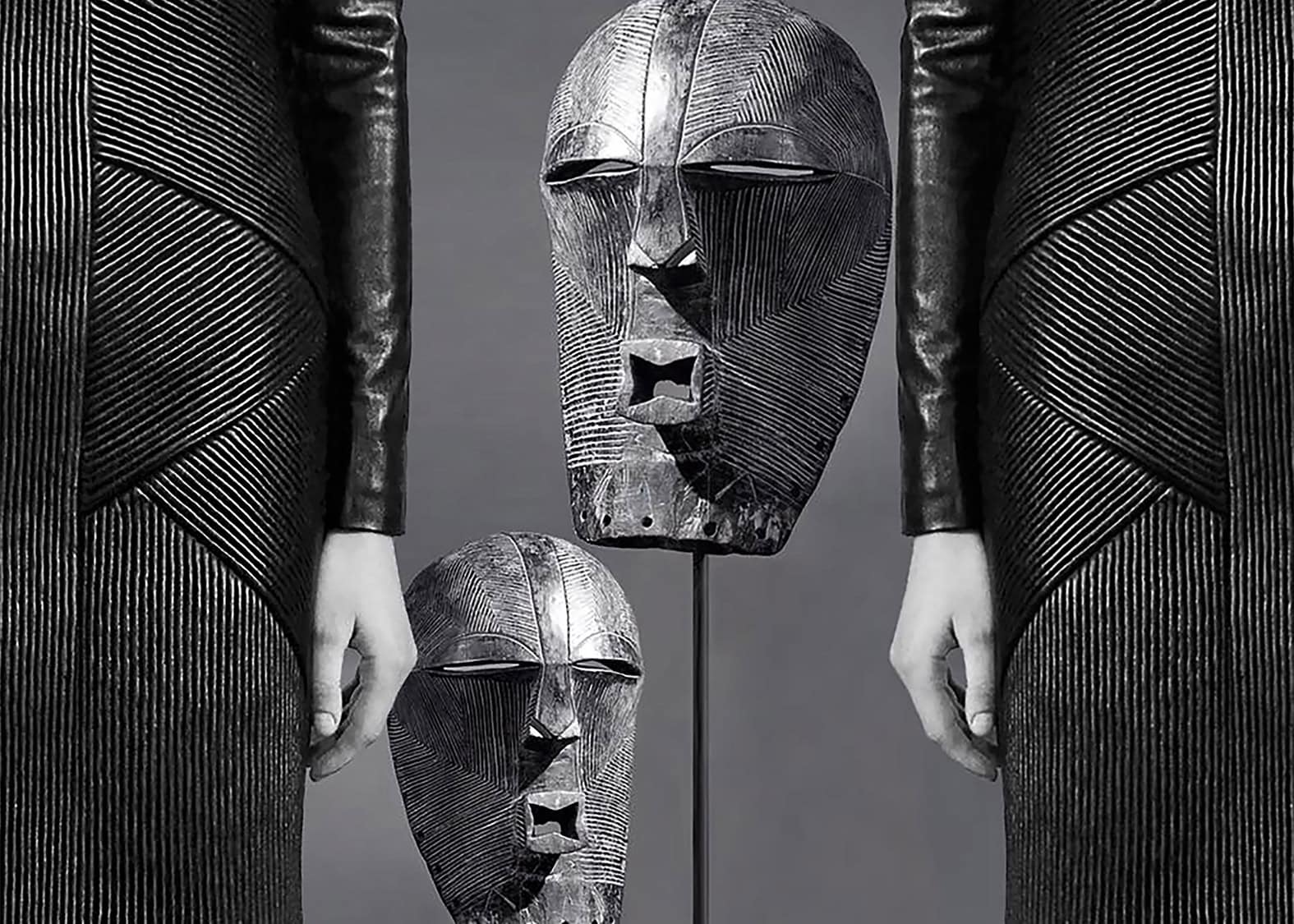
Mimi: I think Architecture school made my approach to design a bit more sophisticated and thoughtful. In architecture, we were looking for beautiful solutions for the environment, but you had parameters. You had to create something inspirational with lots of limitations. You constantly had to consider the end-user, functionality, and when I look back on it now, it was an exercise in sustainability. I apply the same concept and reasoning in fashion. There are size limitations, price limitations, technical limitations, so you design with solutions in mind. You design with your brand DNA and try to address the consumer’s needs by adding value to their lifestyle.
Cipriana: You used an adaptation of the Italian embroidery technique called trapunto to interpret scarification, a traditional body adornment practiced in regions of West Africa where the skin is etched into decorative patterns. Why is it important to keep the traditions of your Ghanaian heritage in your collections and how does it inspire your designs?
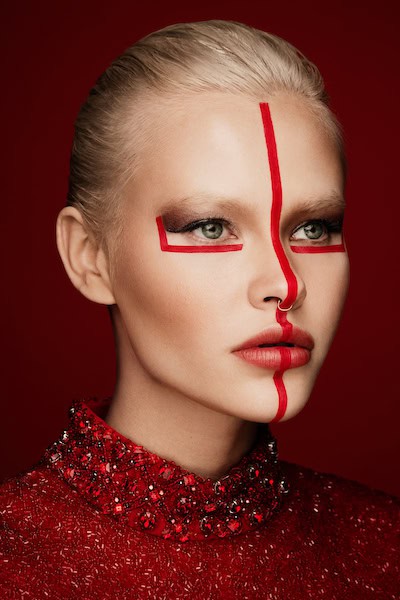
Mimi: When we first started in 2009, we researched traditional types of African fashion from around the continent before colonization. Then we came upon a book by Christiana Oware Knudsen, “The Patterned Skin, Ethnic Scarification in developing Ghana,” and learned about what scarification was and why the practice of scarification existed. Scarification is the cutting of the skin to create permanent patterns and scar tissue to decorate the skin. They usually add more of these permanent markings on the body and face over one’s life. There were many reasons for scarification, identity being the main one. The designs on your body expressed your social status, puberty, marriage, and all rites of passage. Scarification was spiritual, medicinal, and sexual, and also served as protection.
We want to celebrate these patterned bodies from all over Africa and share their stories. My mom also has scarification on her cheek. I had asked her about it growing up and she told me she got it when she was a little girl in her village. I never thought much about it then, but as an adult, I now pay attention to the markings on some of my family members and especially when I travel on the continent. Trapunto embroidery was the best technique to showcase the texture and replicate the raised surface of the skin.
Cipriana: Your incredible designs have been worn by former First Lady Michelle Obama, Vanessa Hudgens, Serena Williams, Rihanna, Paris Hilton, Michelle Trachtenberg, Viola Davis, Regina Davis, Gabrielle Union, Janelle Monae, and Awkwafina. You have been awarded International Emerging Designer of the Year at the Mercedes-Benz Africa Fashion Week and winner of Mayor Bloomberg’s Design Entrepreneurs Award in New York, while personally invited by Michelle Obama in 2016 to the White House for the Celebration of Design event with features in British Vogue, The New York Times, T Magazine, Vogue.com, Ebony Magazine, Vogue UK, Vogue India, WWD, Harpers Bazar, Marie Claire, Essence, Glamour Magazine, Cosmopolitan, and Nylon Magazine. In the face of success, international acclaim and well-deserved notoriety can you share a difficult moment in your life and how you persevered?
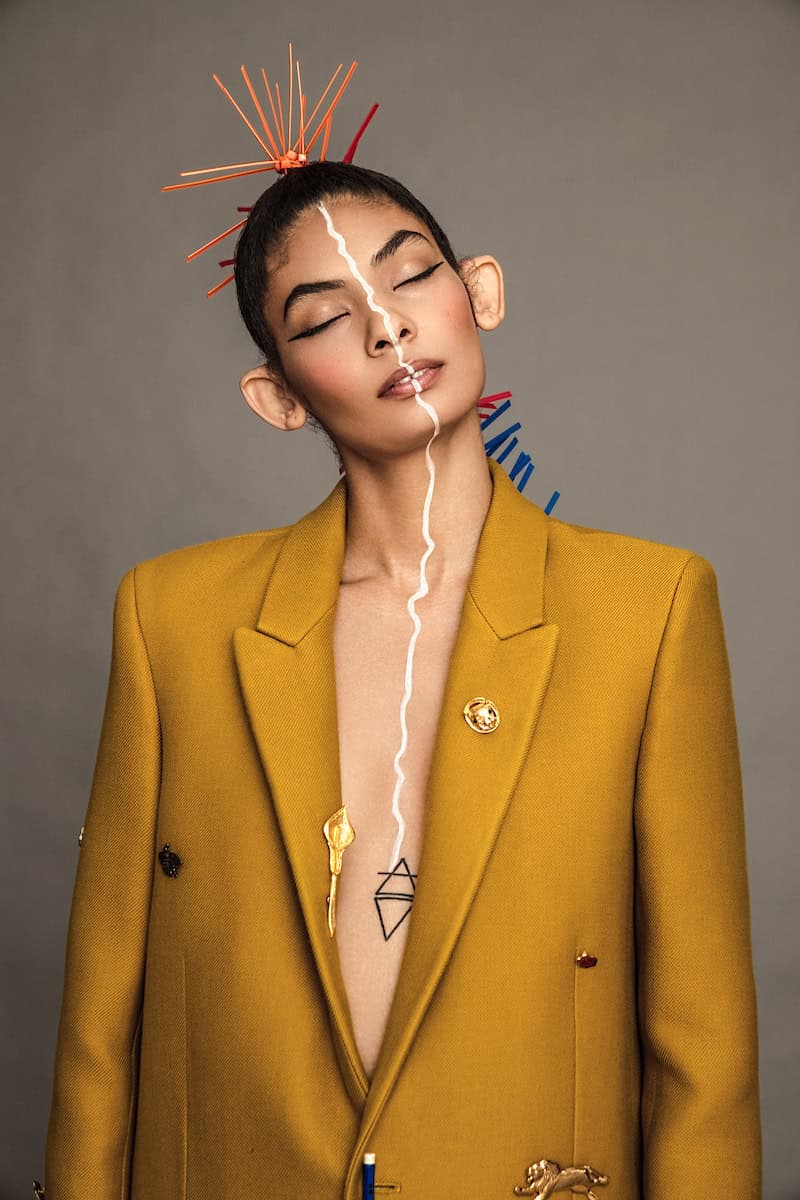
Mimi: There have been many challenging moments over the years, but during COVID-19, I spent a good amount of time thinking about my brand and life. Everything was in limbo. I started reflecting on what was really significant and how to move forward. I got a little overwhelmed and needed to take a step back from everything and quiet the noise of society. Even though we hear so many predictions and judgments about our lives in the media, it doesn’t always mean that will be our experience. It doesn’t always mean that will be true for you.
I decided my brand had a reason to exist and it would survive, no matter what came our way. When times are difficult, I believe that you have to experience what you feel at that moment, and then focus on something positive that may come out of it, and that’s how I work on keeping my outlook positive. I use my mindset, affirmations, and beliefs to help me persevere.
Cipriana: In your interview with the Clever podcast you stated you felt loved by your Mother’s every action but she described the arts as “someplace that was fun and you can do on the side but you probably won’t make money from it.” Despite your polar view of personal career paths, it is obvious you had a loving relationship with your Mother from your past sentiments. What advice would you give to others in pursuing their passions in the face of difference from loved ones? As well as the importance of a supportive environment?
Mimi Plange: My mom constantly told me I could do and be whatever I wanted to be, but maybe just don’t be a fashion designer. I probably share this experience with many people who have parents who grew up in Africa. Back then, my mom was of the mindset that you had to be a doctor or a lawyer, or something practical in order to be successful. She did not see fashion as a viable business. I would say that her concerns about a career in fashion design were valid. That’s really why I studied Architecture.
I knew I was going to go to fashion school at some point, but I needed to choose a major. One day in high school, I recall reading a short bio on the great Italian designer Gianfranco Ferre, and I learned he had gotten his degree in Architecture before his career in fashion so I thought maybe that could also be a path for me. My mom was cool with Architecture.
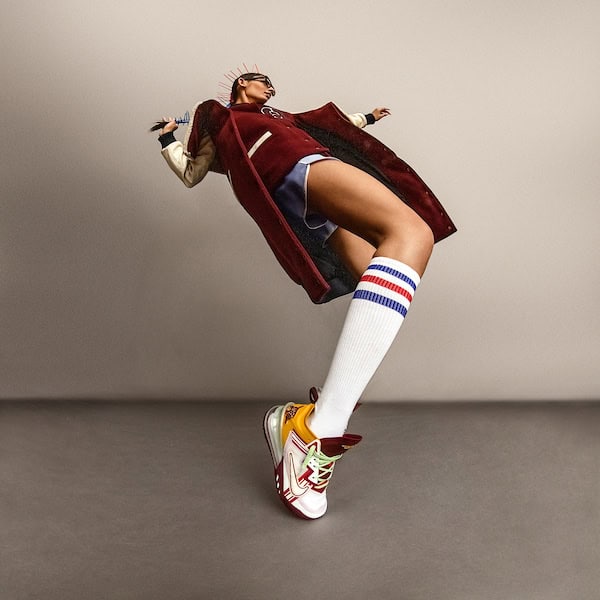
You can still love and respect your elders while making life decisions that work best for you, but you really have to listen deep inside and follow your gut. For me, I knew there was nothing else that I was going to do. I never doubted myself. Some people definitely discouraged me from time to time, but I was sure I would have a brand one day. A supportive environment is the best thing you can hope for. It will give you the freedom to create with less stress, but even if support is not readily available, pursuing your dream is a must. Lack of a supportive environment should not stop you. It may make things harder, but just remember it’s a temporary hardship. Over time, your environment will grow more and more supportive as you grow.
CANNON: WOW! We love your new sneaker collab! tell us more! and you’re reaction when Lebron James’ team reached out?
Mimi Plange: It was an incredible surprise to collaborate with LeBron’s design team and Nike Basketball on the LeBron 18 Low x Mimi Plange, “Higher Learning.” We were so freakin’ EXCITED! Lebron James?! Sneakers! We were all in! When I first got a look at the model I would work on, I loved the design of the shoe right away and was so pumped to create something dope. It is a basketball performance shoe, but I really felt like I could wear it out and wanted to create something that not only looked great on the court but also would be an exceptional shoe to wear on the street. We wanted to create a shoe that reflected LeBron’s dedication to education and our desire to shine a light on those who achieve greatness regardless of the most difficult situations. It’s still unreal!
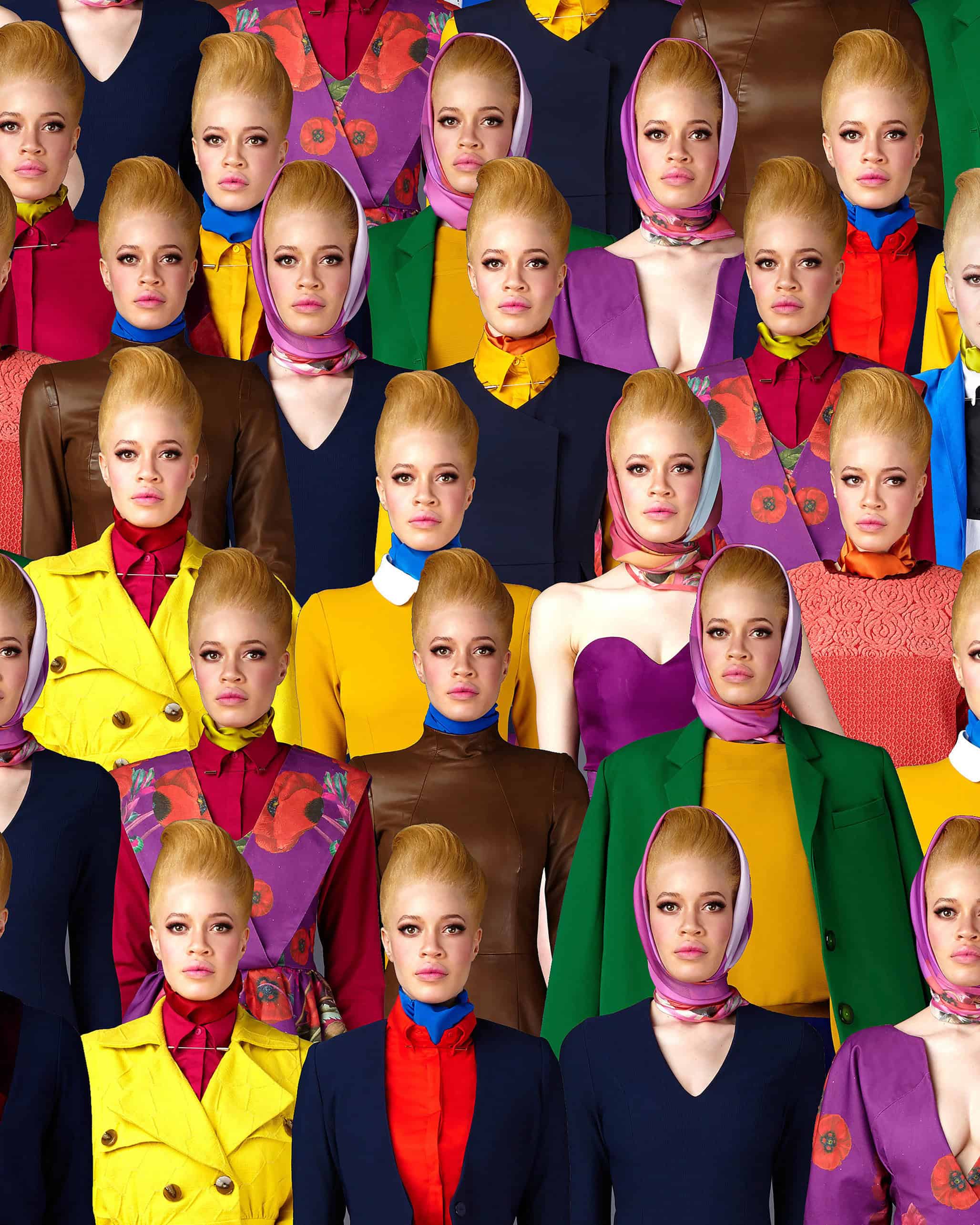
CANNON: Your designs are so gorgeous, meticulous, and whimsical and @ IRK we absolutely love shooting them!!!! tell us about collaborating with magazines and stylists.
Mimi Plange: When you collaborate with magazines and stylists, it’s a time to come together and join forces to tell a story you can all stand behind. I think a great stylist understands your brand language and who your customer is. Our longtime Stylist and Art Director Stacey Jones has been styling most of our shows and lookbooks since 2011. I love the effortlessness of her work and the ability to think of actual ways to wear the clothes that move beyond the runway. Love the way our elegant rebel aesthetic was expressed by stylist Mimi Fisher and photographer Brian Sassmann in the Grazia Middle East editorial, “Bushwick City Limits.”
I love a stylist who introduces me to an alternative way of looking at the collection while upholding our values and DNA. We’ve had amazing experiences on the runway with stylists like Cannon from Cannon Media Group who dressed some of the world’s most amazing female athletes in Mimi Plange for Mercedes Benz Fashion Talents and Laureus Sport USA. We love collaborating with other artists to get refreshing perspectives on who else our customers might be.
CANNON: Who were you most honored to dress?
Mimi Plange: We’ve had the honor of dressing so many outstanding, smart, talented, and bright women, but dressing our amazing former First Lady, Michelle Obama is one of the greatest things we have ever done and will ever do. It still feels unreal. That was a tremendous honor. That was an out-of-this-world honor. As a small designer, it felt like a big hug and a push towards something greater. It felt like being a part of history.
CANNON: The design process of a collection is always so different per designer, what is your process when designing a new collection? your mood board?
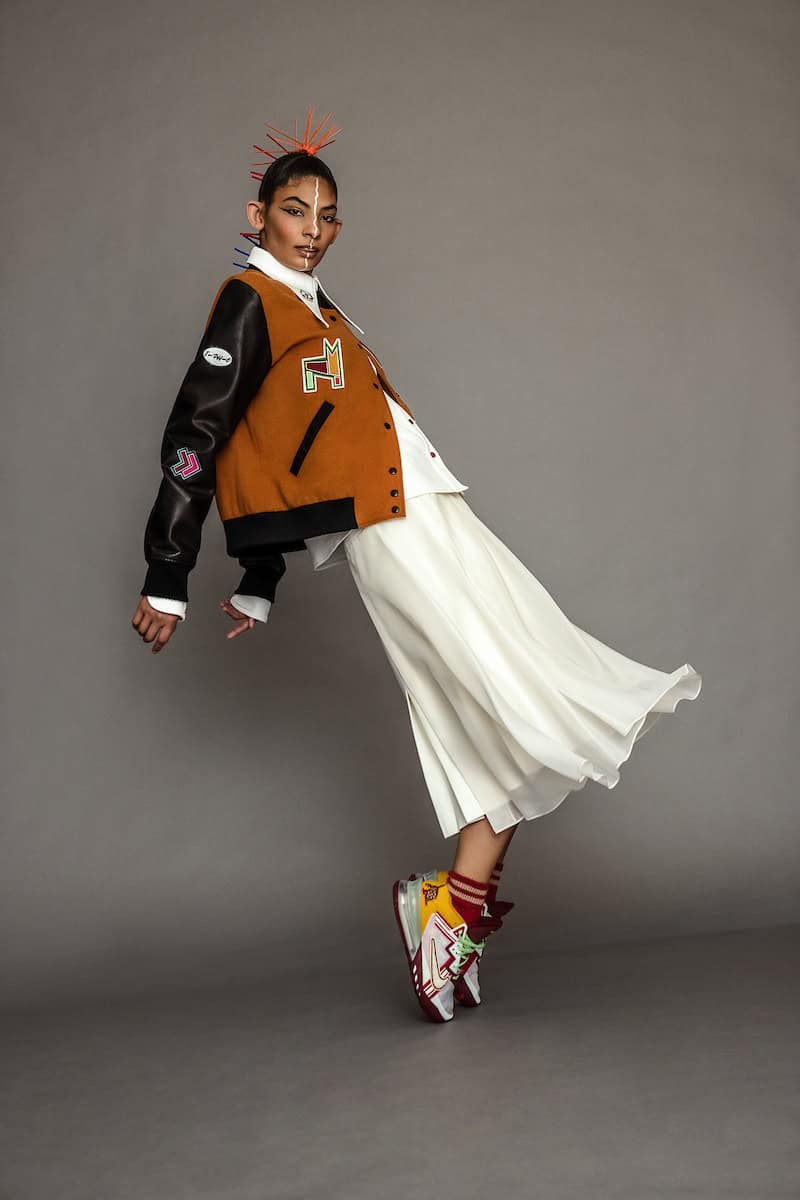
I start by looking at old photographs of different people from all over Africa. I’m wanting to celebrate the designs that exist on their bodies. I look for geometric designs in landscapes and old languages. It’s like I’m looking at the same things all the time, and trying to tell the same story in different ways. I look at lots of art from the past and contemporary African Art now. My mood board is ongoing until I finish the collection. Some things get moved around, I try to not be too rigid.
I like to design everything on the computer. Illustrator is my favorite. I don’t drape first or sew very much. Basically I sketch everything as close to the final product as possible, then I try to find fabrics to complement my sketches. I hardly ever make changes once I complete the collection, though things change a lot during the process. I design using the tools I have and with what is available in the world around me.
CANNON: How has/does racism play a part in your career as a woman of color?
Mimi Plange: I think here in America, we live in a world where race is a constant part of your everyday life whether or not you want it to be.
CANNON: How are you working on sustainability within the collection? in your life?
Mimi Plange: We make our collections in New York City and work with artisans who we know and have grown with over the years. We are simplifying when possible. Reduced our collections and have completely slowed down. We make things we love and hopefully, our customers will cherish them. In my life, I’m more thoughtful about my purchases, and I think about being wasteful. I’m trying to channel “less.”
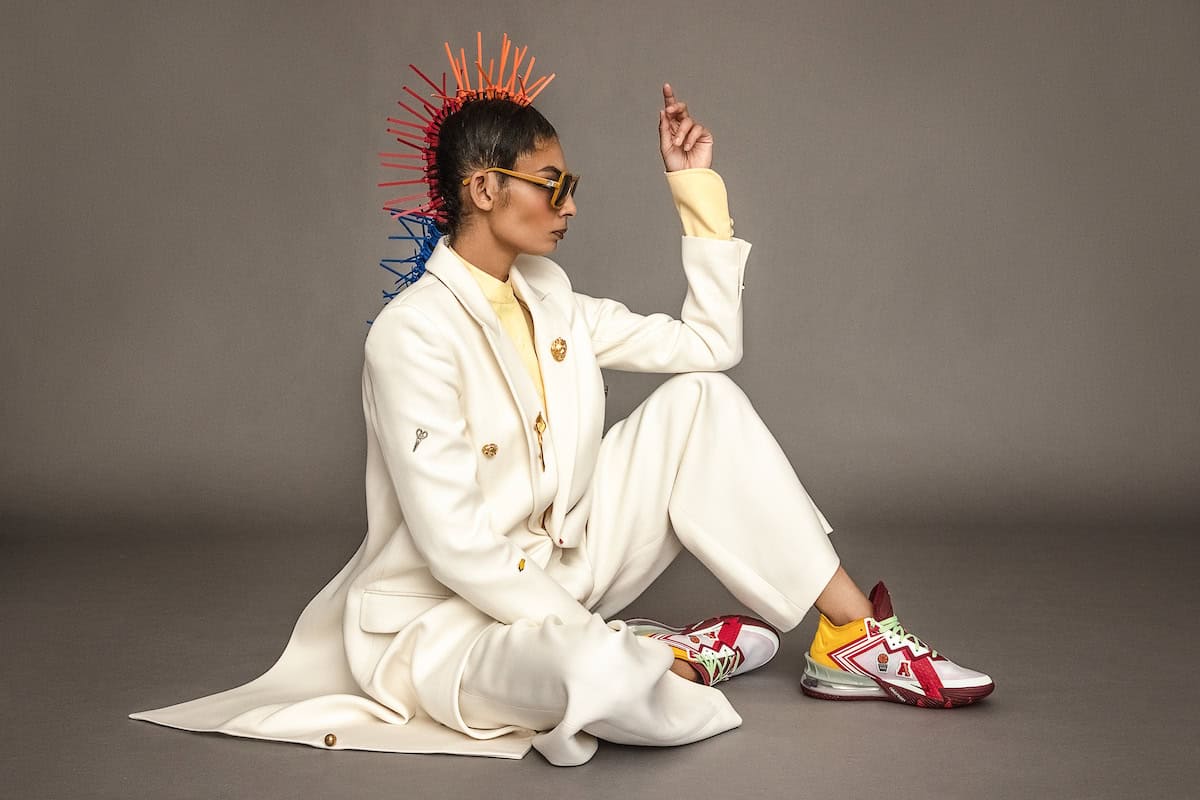
CANNON: “WE EMBED OUR BIOGRAPHY INTO EVERY SINGLE STITCH” talk about this and your amazingly diverse background.
Mimi Plange: I was born in Ghana and moved to the United States when I was 5 years old. I grew up in Southern California in Ontario and Rancho Cucamonga. I moved to the Bay Area to study Architecture at UC Berkeley, and after I graduated I went to fashion school at San Francisco’s Fashion Institute of Design and Merchandising. A few months after I graduated, I moved to New York to take my chances and become a designer. My business partner Ibrahim grew up between Senegal and Belgium. He moved to New York in his 20’s after dropping out of law school. We wanted to build a brand that told a different story of Africa from our lens here in America. When we say, we embed our biography into every single stitch; we mean who we are is in everything we do.
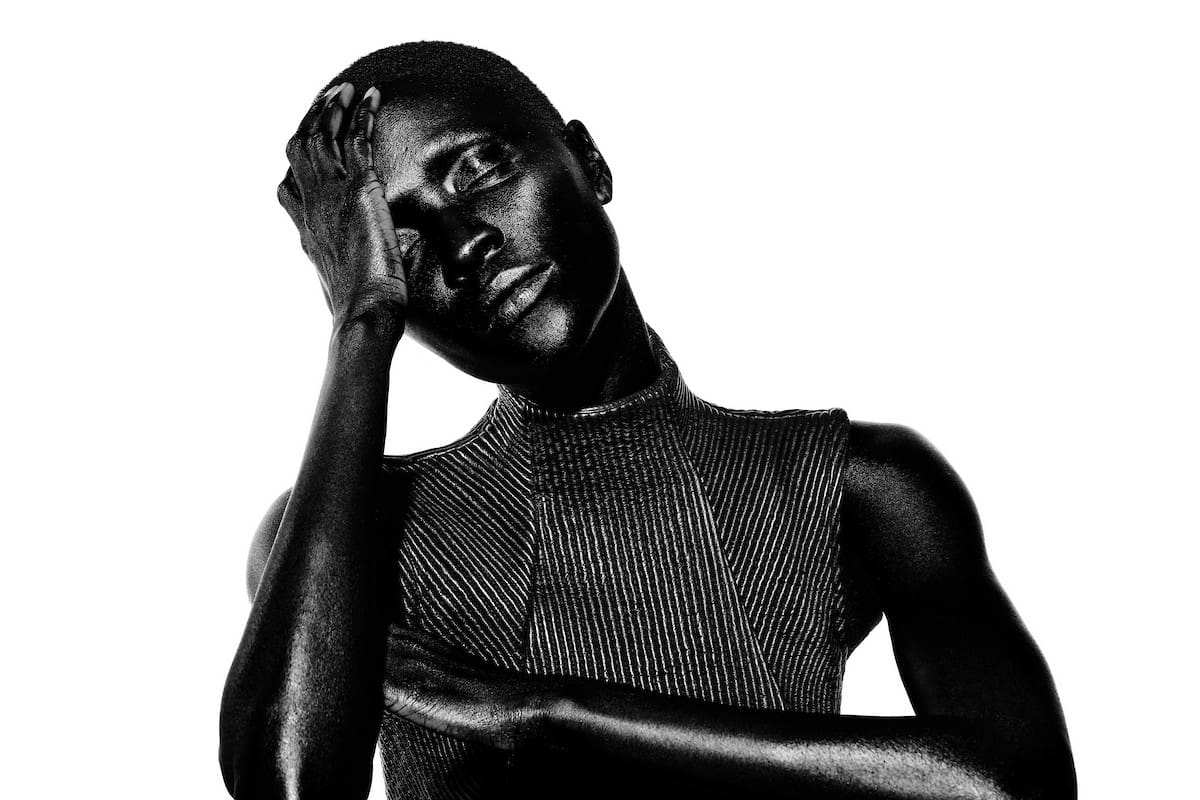
CANNON: Tell us about your eyewear collab?
Mimi Plange: We just launched eyewear for the first time in collaboration with a wonderful artist and designer, Carol Muthiga of Lolita Lorenzo. Carol was born in Nairobi and grew up in Canada. We met in Italy a few years back. She was there as a winner of Vogue’s Italia Alta Roma “Who Is On Next” prize for accessories, and I was invited to take part in Fashion’s Night Out with the Ethical Fashion Initiative. I loved her work at first sight and thought her handbags were incredible. I was a fan and we hit it off right away. We always felt our work was complimentary. During quarantine, we created eyewear together that is modern and influenced by her Kenyan Agikuyu culture. The Mimi Plange + Lolita Lorenzo Limited edition eyewear encompasses the design ethos of both of our brands, individuality
CANNON: What advice do you have for emerging designers, artists, and stylists?
What advice do you have for emerging female designers, artists, and stylists?
What advice do you have for emerging women of color designers?
Mimi Plange: This is probably the hardest thing you will ever do, but you can do it.
You are all competing with the entire world, never forget that.
This is an endless game and you are building something that hopefully will live beyond you.
This involves talent, drive, and strategy.
You’ve got to have a story.
Be able to explain why it should be you.
You always have to balance between being confident and being humble.
Make sure your customer is a real person that you have seen or met before.
Put yourself in their shoes and try to learn what they want and desire, while creating your own unique brand DNA.
Go for it.
The answer no isn’t the end of the world. So what?
There may be lots of No’s and that’s ok. It will always come down to the work itself, no matter who you are. The most important reason people will buy from you is that they love what you do and they trust your quality. Focus on the quality and integrity of your work and create an experience that your customers will want to come back to.
Be the best designer you can be. Take time off of designing and people-watch. What are they wearing, why is this item so popular? Clothing is not just about design, you have to tap into a mood.
CANNON: What have been your favorite moments of your career?
Mimi: Launching our first sneaker with Lebron James and Nike Basketball has been probably one of my favorite moments. It was an incredible journey to this point, and we’ve got so much further to go. Lebron’s entire team at Nike was incredible to work with. Everything just felt super duper special and I love what we are creating together. 😉
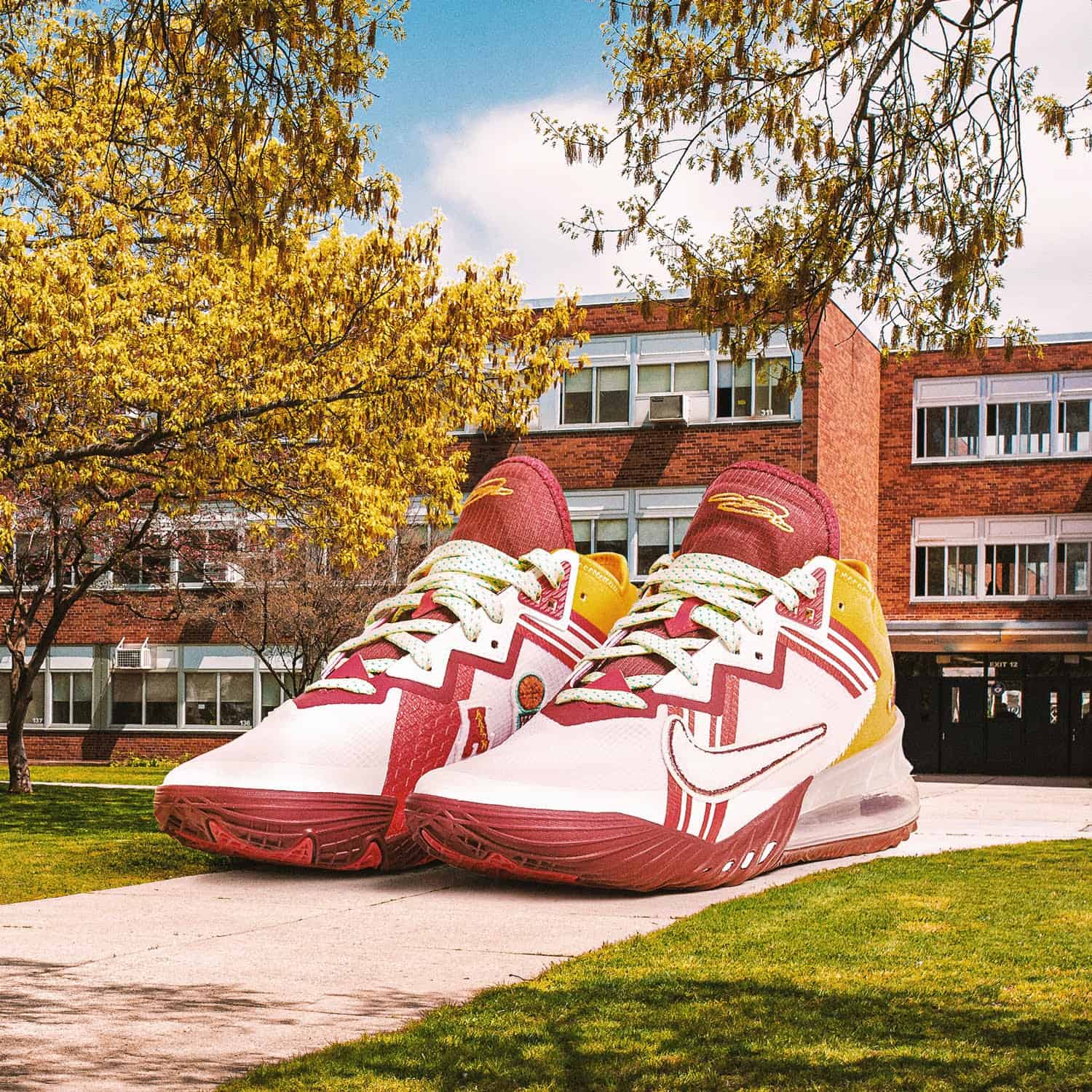
Mimi Plange x Lebron James
Photo By Carlos Jiménez Varela
Photo Credits: Red Images
Photography @lindsayadler_photo
Styling @thecannonmediagroup @theonly.agency
Red Images-Hair @linhhair
Makeup @joannegair
Model @loeil.de.la.mer @officialmodelsny
Gown @mimiplange
Hand embellished cape gown with
Swarovski crystal trim
B&W Images-
Photography @lindsayadler_photo
Styling @thecannonmediagroup @theonly.agency
Makeup @lijhajade
Hair @linhhair
Model @ya_jagne
Gear @adorama
Dress/Coat @mimiplange
Leather trapunto embroidery mock neck dress
Trapunto embroidery leather and wool coat with glass and cut bead panels
LookBook-
Photography: @lindsayadler_photo
Makeup: @Joannegair
Hair: @Linhhair
Art Direction/ Styling: @staceyjjones
Wardrobe: @mimiplange
Models: @somaliaknight @eugon_mcneil
Share this post
Cannon is our Editor-At-Large since August 2016. He grew up in New York City and was influenced at an early age by rock and fashion. He is an award-winning celebrity stylist, fashion editor and creative director who has styled many of his favorite musicians including Annie Lennox, Cyndi Lauper, Jimmy Page and Shirley Manson. His wit, charisma, and style have made him a trusted and sought-after stylist by Hollywood legends such as Liza Minnelli, Willem Dafoe, Dennis Hopper, and Glenn Close.
Cannon has also worked with some of today's hottest celebrities, including Diane Kruger, Angelina Jolie, Matt Damon, Penn Badgley and Kellan Lutz. He was the first stylist to get Barbra Walters into a pair of jeans for a photo shoot, and had the opportunity to dress Michael Jackson as the KING OF POP for MTV. In addition, Cannon also founded PLUMA- a luxury costume jewelry collection made exclusively in Italy that was recently featured on the cover of Italian Vogue. As a result of working with great musicians and celebrities, Cannon has contributed to multiple publications including: Rolling Stone, Vogue, Time, Entertainment Weekly, Vanity Fair and W. He has styled large casts for every network including: Lost, Sopranos, The View, Project Runway, Kelly, The Today Show, Top Chef, and The Office. Cannon's expertise in fashion also has lent itself to him being in front of the camera as a style expert, with television appearances on E!, Style, VH1, CBS, NBC, ABC, TLC, and Bravo. Cannon has been an on-air spokesperson for TJ Maxx, Burlington Coat Factory, Chapstick, Pantene, Dove, and Peanuts/Snoopy Worldwide. He has also been profiled in American, German and Japanese publications. In addition, Cannon was instrumental in organizing an inaugural panel discussing fashion and film for MEIFF in which he also served as a participant alongside Jason Wu and Kathryn Neale Shaffer, contributing editor at American Vogue.
Whether it's obtaining real museum pieces for a Discovery Channel commercial or recreating 50 unique culturally observant costumes for the worldwide launch of the National Geographic Channel, Cannon's respect for authenticity and his gift of problem solving has left lasting impressions on everyone he has worked with. Additional commercial work also includes Saks Fifth Avenue, Target, Sony Music, RCA, Bravo Network, Sprint, Bergdorf Goodman, and Neiman Marcus.
Cannon has styled fashion shows for Jason Wu and the Life Ball in Vienna, Austria, starring THE BLONDS, which is the largest AIDS benefit runway show in the world, that year hosted by President Bill Clinton and Eva Longoria. Other fashion shows include Snoopy in Fashion, Joanna Mastrioni to name a few. He has also styled shows for Safilo and their licensed brands, which include Gucci, Christian Dior, Emporio Armani, Ralph Lauren, Dior Homme, Max Mara, Marc Jacobs, Marc by Marc Jacobs, Stella McCartney, Banana Republic, Tommy Hilfiger.
Read Next

